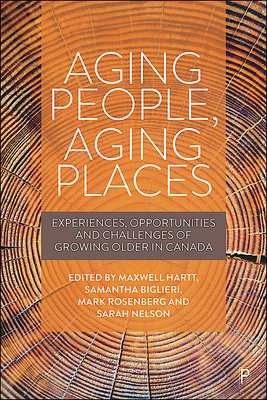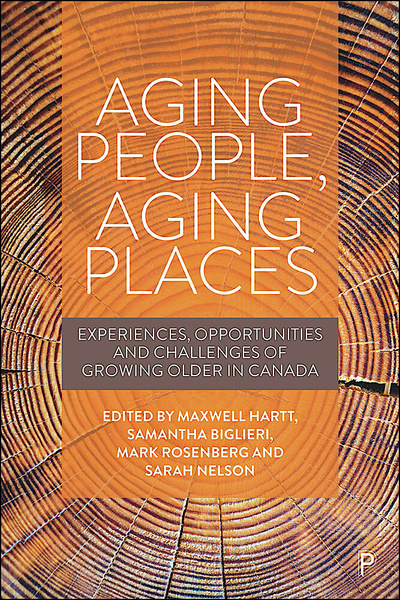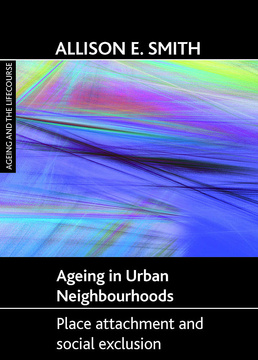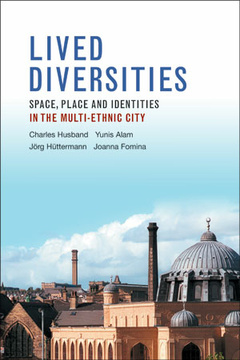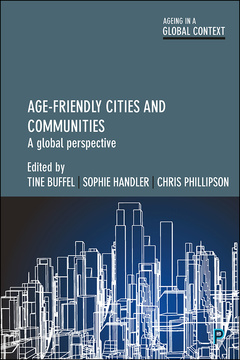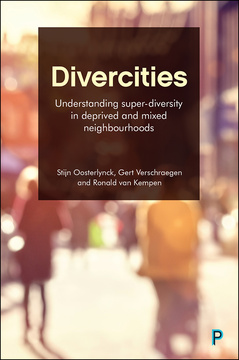Aging People, Aging Places
Experiences, Opportunities, and Challenges of Growing Older in Canada
Edited by Maxwell Hartt, Samantha Biglieri, Mark Rosenberg and Sarah Nelson
Published
Mar 31, 2021Page count
280 pagesISBN
978-1447352563Dimensions
234 x 156 mmImprint
Policy PressPublished
Mar 31, 2021Page count
280 pagesISBN
978-1447352594Dimensions
234 x 156 mmImprint
Policy PressPublished
Mar 31, 2021Page count
280 pagesISBN
978-1447352594Dimensions
234 x 156 mmImprint
Policy PressHow well do the places where we live support the wellbeing of older adults?
The Canadian population is growing older and is reshaping the nation’s economic, social and cultural future. However, the built and social environments of many communities, neighbourhoods and cities have not been designed to help Canadians age well.
Bringing together academic research, practitioner reflections and personal narratives from older adults across Canada, this cutting-edge text provides a rare spotlight on the local implications of aging in Canadian cities and communities. It explores employment, housing, transportation, cultural safety, health, planning and more, to provide a wide-ranging and comprehensive discussion of how to build supportive communities for Canadians of all ages.
“With a remarkable depth of insight into the diverse contexts of aging in Canada, especially the groundbreaking emphasis on indigenous experiences of aging, this book is an excellent resource for understanding better 21st century aging societies.” Mark Skinner, Trent University
Maxwell Hartt is Assistant Professor in the Department of Geography and Planning at Queen’s University.
Samantha Biglieri is Assistant Professor in the School of Urban and Regional Planning at Ryerson University.
Mark W. Rosenberg is Professor in the Department of Geography and Planning at Queen’s University and the Tier 1 Canada Research Chair in Aging, Health and Development.
Sarah E. Nelson is Assistant Professor in the Department of Geography and Geology at the University of Nebraska Omaha.
Introduction ~ Maxwell Hartt and Samantha Biglieri
Part One: Urban
Aging in Urban Canada ~ Samantha Biglieri, Maxwell Hartt and Natalie S. Channer
“An Accessible Route is Always the Longest” ~ Atiya Mahmood and Delphine Labbé
Urban Community Vignette ~ Lillian Wells
Walking in the City: Seniors’ Experiences in Canada and France ~ Marie-Soleil Cloutier and Florence Huguenin-Richard
Urban Practitioner Vignette ~ Marianne Wilkat and Barry Pendergast, with Natalie S. Channer
Part Two: Suburban
Aging in Suburban Canada ~ Maxwell Hartt, Natalie S. Channer and Samantha Biglieri
An Age-Friendly City? LGBTQ and Frail Older Adults ~ Lindsay Herman, Ryan Walker and Mark Rosenberg
Suburban Community Vignette ~ Candace Skrapek and Elliot PausJenssen
New Mobilities and Aging in the Suburbs ~ Jennifer Dean and Edward Donato
Suburban Practitioner Vignette ~ Chris Kawalec with Madison Empey-Salisbury
Part Three: Rural
Aging in Rural Canada ~ Natalie S. Channer, Samantha Biglieri, and Maxwell Hartt
A Profile of the Rural and Remote Older Population ~ Mark W. Rosenberg
Rural Community Vignette ~ Della Webster and Sylvia Humphries
Supports and Limitations of Aging-in-a-Rural-Place for Women Age 85 and Older ~ Olive Bryanton, Lori E. Weeks and William Montelpare
Rural Practitioner Vignette ~ John Whalley
Part Four: Indegeinous
Aging in Indigenous Canada ~ Sarah Nelson
Pursuing Pathways to Care: Dementia and Aging in Indigenous Communities ~ Carrie Bourassa, Mackenzie Jardine, Danette Starblanket, Sebastian Lefebvre, Marlin Legare, Dana Hickey, Jessica Dieter, Betty McKenna, Gail Boehme and Nicole Akan
Indigenous Community Vignette ~ Larry McDermott
Métis Older Adults and the Negotiation of Nativeness ~ John Lewis
Indigenous Practitioner Vignette ~ Connie Paul
Conclusion ~ Mark W. Rosenberg







